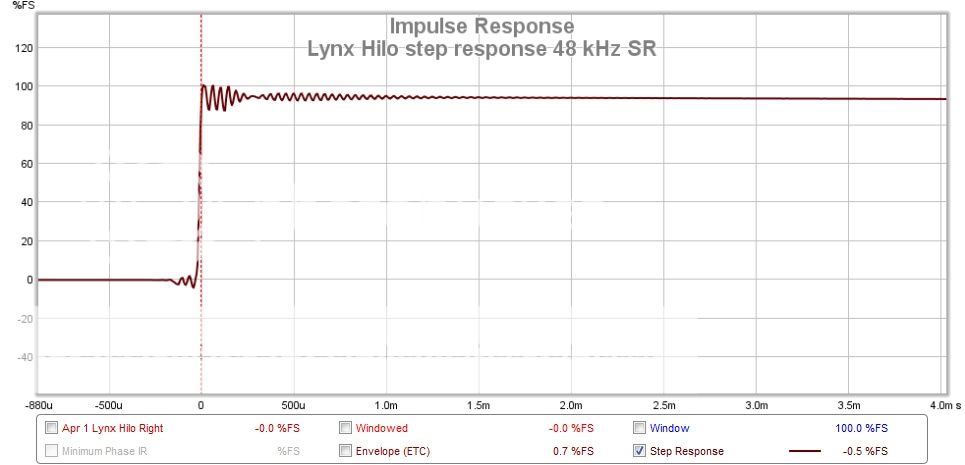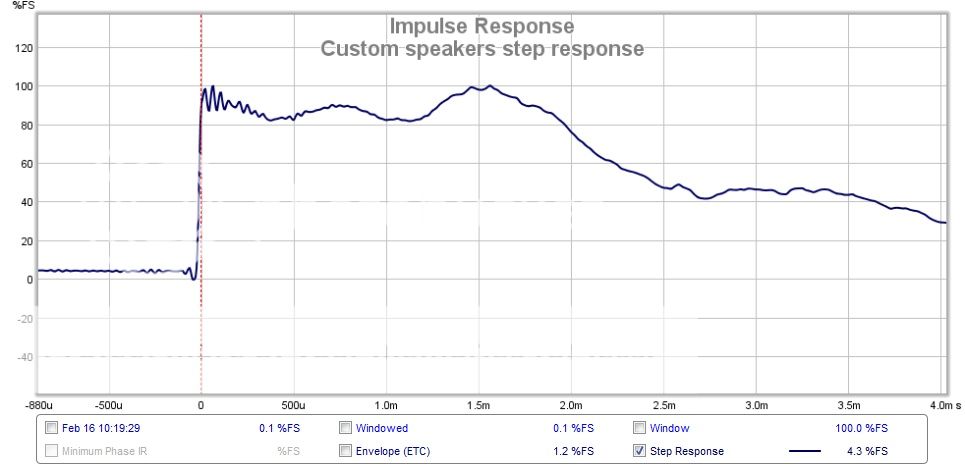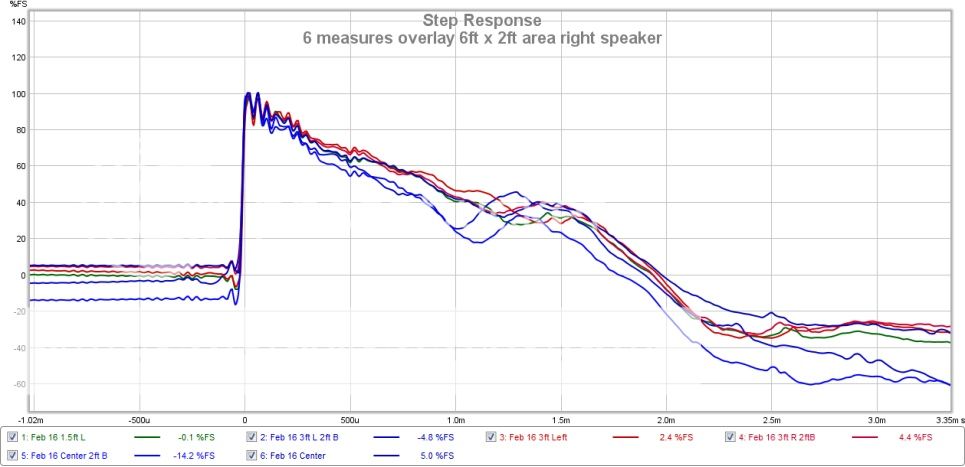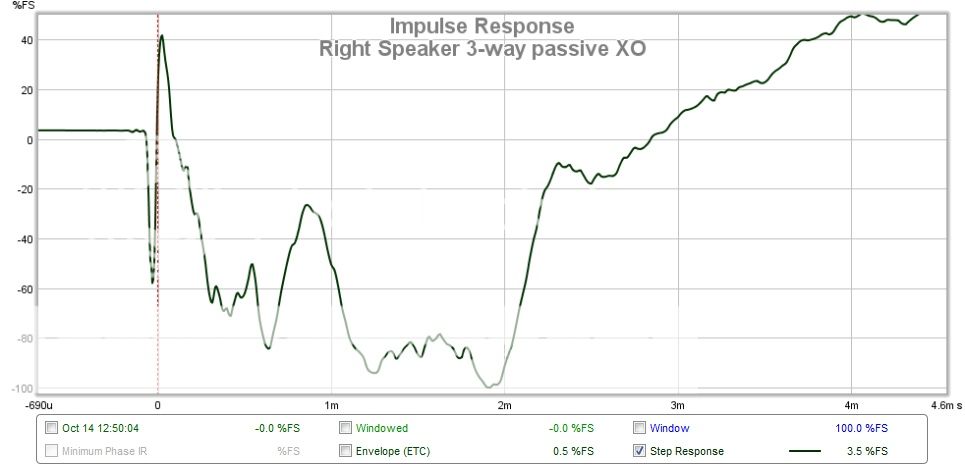Just to say something about SEOS and Gedlee type "waveguides" and various copycat dead ends -They sound very bad compared to a real horn loaded midrange, sure you can build crossovers to correct this or that but they still suck. No life, bad tone no scary realism, snap or presence compared to a good horn. Don't base a horn system on this compromised technology. Go listen to some real horns. Sure I'm the guy that grew up listening to 288's in 311 horns with twin 515's in big onkens so I'm biased toward realistic FUN reproduction but come on those waveguides sound like domes but with a little more Umph, and not in a good way.
Exactly what is this real horn loaded midrange of which you speak?
Gary Dahl
One that acoustically loads a driver in the midrange of the music, 200 to 2000 cycles. There are several ways to do it but using one horn works just fine. I use a cone type compression driver but you can split it up between a couple horns or use an extended range horn loaded cone that will squeak out the bandwith. The Danley horn with multiple drivers and correct crossover will do it too
I'm trying to make sense of what I see in your avatar, assuming that it is a picture of one channel of your speaker system. Would you mind describing it? It does look interesting.
Gary Dahl
Yes! It does look interesting!
Best Regards,
TerryO
I'm trying to make sense of what I see in your avatar, assuming that it is a picture of one channel of your speaker system. Would you mind describing it? It does look interesting.
Gary Dahl
I wrote a little bit about the speakers here
http://www.diyaudio.com/forums/multi-way/251665-stargate-6-horn-system.html
Only thing different is I'm using a different treble driver and horn now and crossing it in at 2k
[...] But throw that supertweeter in there and it will without doubt result in a poor impulse response.
This is certainly the case, that is, if you look at the impulse response on a chart. However, if you actually listen to it, in my experience the secondary impulse due to the supertweeter at >7kHz is inconsequential and does not alter the perception of a "tidy" main impulse for all the remaining frequencies that matter the most.
This has been my experience too, I agree. And they don't even need to be very large, i.e. an Fc of ~450Hz seems to 'do it' just fine.The large horns sound very good. Very lifelike.
Sure. Everything does. It's a matter of picking the 'best' compromise, as always.But they have problems too.
The dispersion gets narrow with increasing HF. Besides, you do need a solution to the higher frequencies. I like to prioritize flat frequency response on axis and a uniform off-axis response. So, a separate supertweeter is not for me. Therefore, large horns are out.
Your loss, IMHO. As I explained above, adding a supertweeter is, to me, the lesser of the two evils. The separate impulse response and 'choppy' response at crossover, both happening at such high frequencies, may be ugly to look at on paper, yet they are in practice almost non-issues when actually listened to.
I agree here.Then I tried constant directivity horns. I have everything from SEOS-12 to the SEOS-24 with a 1.4" throat that can go quite low, but somehow I could never get the balance right. To negate the increased power in the HF, you have to make the on-axis response droop. And this trade-off just doesn't sound right to me.
Then I had an experience that changed my outlook. I had built cabinets for the KEF Q100 driver. I set it up in front of the big horn system and it blew away the horn system. In realism, in soundstage depth, width, balance. It was so good that at reasonable volumes you couldn't tell whether the large horn system was playing or the little coaxes were playing. In hindsight, it was quite simple why they sounded so good. Flat, smooth frequency response, smooth off-axis response, and a small source. Yes, it doesn't go as loud as the big horn system, but who cares? It is very rewarding both spatially and on all kinds of music.
So, in the end, if you have a large room to fill or you like to listen loud, horns can work. But otherwise you are always grappling with CTC problems or with frequency response flatness and smoothness.
Interesting journey, and thank you for relating it.
Curiously, my own experience and conclusions are quite the opposite, though.
I listened to MANY high-end direct radiators, both concentric and not, and then when I finally got to experience a properly done large woofer + horn system, I was convinced that nothing I had experienced before could compare in terms of sheer realism. And still, or maybe I should say, especially while listening in the near field (< 3m) and at low to medium volume. So, for me it's not about the 'showy' part of being able to blow one's head off with sheer SPL. It's about getting a sound that is dynamic, uncompressed, coherent and 'alive', so to speak, regardless of listening level and with less contribution from the room's acoustics.
The often abused phrase "like a listening window onto the performance" comes to mind, and, I think, describes the experience well enough.
Cheers,
Marco
...
Although digital FIR correction has the charm of solving time and frequency-domain problems, this is only true for one point in space. One of the annoying problems with reflection, diffraction, and driver time-alignment errors is a significant spatial component to the error. In other words, if one point in space is fully corrected, another point a foot or two away could be quite bad...
I use digital FIR correction and my acoustic measurements tell a different story.
When measuring a speakers systems time coherence capabilities, it appears the step response is a more effective measurement than an impulse response as explained here: Measuring Loudspeakers, Part Two Page 2 | Stereophile.com
What does a good and not so good step response look like: Measuring Loudspeakers, Part Two Page 3 | Stereophile.com
The following step response measures can be compared to the charts in the Stereophile article. Note the millisecond horizontal scale.
Here is the step response of my Lynx Hilo AD DA converter in external loopback mode:

Compare this with the perfect step response, Figure 10 in the Stereophile article.
This is the step response of my right, active 3-way speaker system, with a 97 dB sensitivity 15" in large sealed cab with 2 CD's and large-ish waveguides covering 500 Hz on up measured at the LP some 9' away:

Compare to Figure 11 in the Stereophile article
Here are 5 additional acoustic measures moving the mic around a 6' x 2' grid covering the couch area at the LP:

Corresponding 6 frequency response measures of the right speaker at the LP around a 6' x 2' grid:

The room is having its way with the one measure where the mic is furthest away from the right speaker - i.e. left back corner of the couch.
I used REW to measure the acoustic response at the LP by digitally routing the output of REW into the input of JRiver's 64 - Bit Convolution engine that hosts the FIR filters, (i.e. 3 way digital XO, time alignment and room correction), DA conversion, fed directly into amps, driving 6 speakers with Solen protection caps on the midrange and high frequency CD's. Mic->mic preamp->Lynx Hilo AD conversion->REW input->REW charts.
I started with a 3 way passive XO and no time alignment. Aside from going from vented to sealed using the same cab, and changing both the high frequency CD and waveguide (for 5 kHz and above), these are the same speakers, with the same XO points, as measured above in the same physical locations. One can see why I ended up going with computer software digital XO, time alignment, and room correction:

Sealed back midrange , operating from 200 hz , interesting ....
Most sealed back midranges like Celestion 6 or 8" or Eminence 6" are only usable to 650 Hz in the same horns and at the top end around 1.5k. The JBL CMCD drivers are far better in all respects. These are ' Differential drive midrange drivers with a back chamber and modern phase plug.
The crossover between the bass horn and mid horn is set at around 260 HZ due to the midrange horns having a 3-4 db bump centered around 220 Hz. The upper bass/low mid of the bass horn is as good, maybe better then the mid horn response out to 350 Hz. When the midrange horn is placed in the array directly above the basshorn instead of above the treble it sounds best crossed at 300 Hz and around 1.8K to the treble.
Last edited:
Member
Joined 2003
This is certainly the case, that is, if you look at the impulse response on a chart. However, if you actually listen to it, in my experience the secondary impulse due to the supertweeter at >7kHz is inconsequential and does not alter the perception of a "tidy" main impulse for all the remaining frequencies that matter the most.
This has been my experience as well. With a spread crossover and a bit of extra attenuation, the RAALs add just the right amount of top end and sound very natural. Allowing too much output or using too low a crossover makes the tweeter's presence obvious and mucks up the imaging.
It is important, of course, to determine the optimum front-to-back location for the RAAL.
I let the top end of the 745NeoBe drivers roll off naturally, and use a 2nd order HP on the RAALs.
Gary Dahl
Hi, Mitchba! Any chance you could repost your info with impulse response instead of step function? I would imagine the data is still there in your computer.
Stereophile didn't explain things very well. Impulse response and step function have two different spectral shapes, and are used for analyzing different aspects of loudspeaker performance.
The energy of the step function is tilted towards the LF, and mostly shows whether the system is a closed or vented box (it actually shows whether the system is flat to DC, which no loudspeaker is). It is not useful if you want to see diffraction artifacts from 1~10 kHz. Conversely, the energy of the impulse response is tilted towards the HF, which I find good for revealing problems with diffraction and time misalignment in the HF crossover (problems in the 0.1 to 3 mSec range are clearly visible).
The step function is useful if the system is a complex 3, 4, or 5-way system with multiple allpass crossovers, most commonly seen in the sound-reinforcement world (and not as often in theaters). In this application, it can reveal if there's several feet of time misalignment between the drivers ... a Klipschorn or LaScala, for example.
It's less informative with 2-ways, though, since the crossover falls in a region where the step has little energy, and the step shows almost nothing of HOMs or diffraction artifacts. That's why I rely on impulse response, and the time-to-decay to -30 dB, or 3% of the original impulse height on a voltage display. The impulse response is also very sensitive to emission angle, and a good way to detect if there are cancellation nulls or peaks in the polar pattern.
I should mention that a designer, marketers, and Stereophile have different reasons for measuring loudspeakers. A designer wants to find mechanical and acoustical problems and correct them; a marketer wants to sell speakers; and Stereophile is attempting to correlate measurements and their subjective reviews. To their credit, they publish stupendously bad FR curves on speakers that sell for $60,000 or more, which is a public service.
Stereophile didn't explain things very well. Impulse response and step function have two different spectral shapes, and are used for analyzing different aspects of loudspeaker performance.
The energy of the step function is tilted towards the LF, and mostly shows whether the system is a closed or vented box (it actually shows whether the system is flat to DC, which no loudspeaker is). It is not useful if you want to see diffraction artifacts from 1~10 kHz. Conversely, the energy of the impulse response is tilted towards the HF, which I find good for revealing problems with diffraction and time misalignment in the HF crossover (problems in the 0.1 to 3 mSec range are clearly visible).
The step function is useful if the system is a complex 3, 4, or 5-way system with multiple allpass crossovers, most commonly seen in the sound-reinforcement world (and not as often in theaters). In this application, it can reveal if there's several feet of time misalignment between the drivers ... a Klipschorn or LaScala, for example.
It's less informative with 2-ways, though, since the crossover falls in a region where the step has little energy, and the step shows almost nothing of HOMs or diffraction artifacts. That's why I rely on impulse response, and the time-to-decay to -30 dB, or 3% of the original impulse height on a voltage display. The impulse response is also very sensitive to emission angle, and a good way to detect if there are cancellation nulls or peaks in the polar pattern.
I should mention that a designer, marketers, and Stereophile have different reasons for measuring loudspeakers. A designer wants to find mechanical and acoustical problems and correct them; a marketer wants to sell speakers; and Stereophile is attempting to correlate measurements and their subjective reviews. To their credit, they publish stupendously bad FR curves on speakers that sell for $60,000 or more, which is a public service.
Last edited:
I should add that any measurement that includes the floor bounce, or additional reflections from the rear or side walls, tells us very little about the loudspeaker, and more about the requirements for overall system equalization.
All it takes is one good reflection and the whole measurement is dominated by comb filtering (in the frequency domain) and a distorted echo in the time domain. Additional room reflections make the entire measurement unintelligible.
I guess that's an additional reason for using impulse response over step response: you can see each individual reflection, which is a warning to the person doing the measurement to get rid of them, and re-measure again.
All it takes is one good reflection and the whole measurement is dominated by comb filtering (in the frequency domain) and a distorted echo in the time domain. Additional room reflections make the entire measurement unintelligible.
I guess that's an additional reason for using impulse response over step response: you can see each individual reflection, which is a warning to the person doing the measurement to get rid of them, and re-measure again.
Last edited:
- Home
- Loudspeakers
- Multi-Way
- Beyond the Ariel